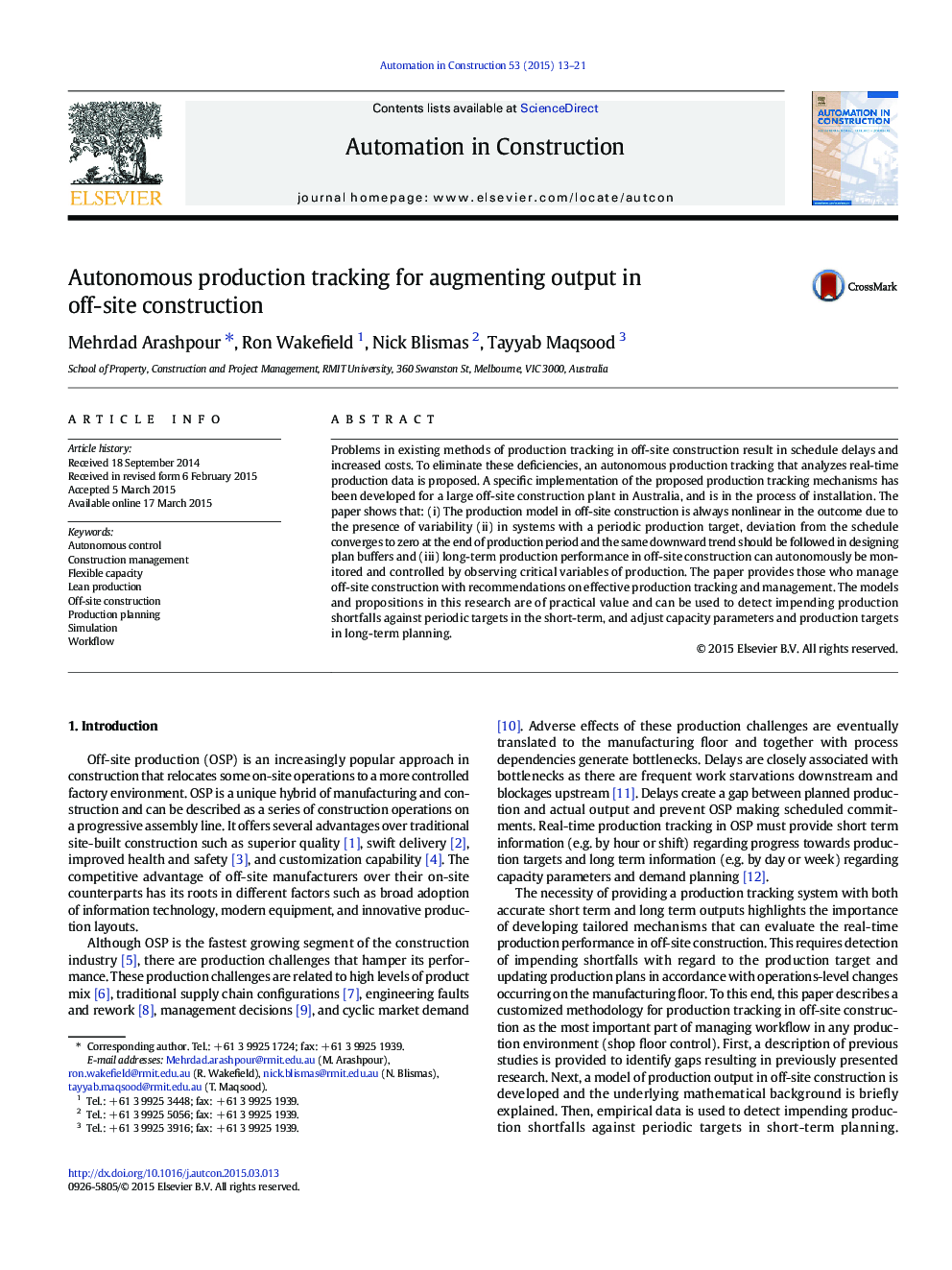| کد مقاله | کد نشریه | سال انتشار | مقاله انگلیسی | نسخه تمام متن |
|---|---|---|---|---|
| 246351 | 502363 | 2015 | 9 صفحه PDF | دانلود رایگان |
• The production model in off-site production (OSP) is nonlinear in outcome.
• Real-time deviation from the schedule determines the OSP performance.
• OSP is more flexible at the start of production rather than end.
• Optimal size of capacity buffers in OSP converges to zero at the end of production.
• Shop floor control in OSP is facilitated by monitoring critical production variables.
Problems in existing methods of production tracking in off-site construction result in schedule delays and increased costs. To eliminate these deficiencies, an autonomous production tracking that analyzes real-time production data is proposed. A specific implementation of the proposed production tracking mechanisms has been developed for a large off-site construction plant in Australia, and is in the process of installation. The paper shows that: (i) The production model in off-site construction is always nonlinear in the outcome due to the presence of variability (ii) in systems with a periodic production target, deviation from the schedule converges to zero at the end of production period and the same downward trend should be followed in designing plan buffers and (iii) long-term production performance in off-site construction can autonomously be monitored and controlled by observing critical variables of production. The paper provides those who manage off-site construction with recommendations on effective production tracking and management. The models and propositions in this research are of practical value and can be used to detect impending production shortfalls against periodic targets in the short-term, and adjust capacity parameters and production targets in long-term planning.
Journal: Automation in Construction - Volume 53, May 2015, Pages 13–21
